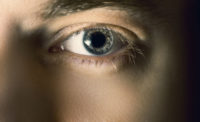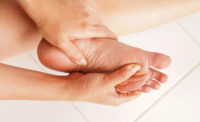 Since your 40s, you may have noticed that you needed glasses to see up close. You may have more trouble adjusting to glare or distinguishing some colors.
Since your 40s, you may have noticed that you needed glasses to see up close. You may have more trouble adjusting to glare or distinguishing some colors.
These changes are a normal part of aging. They alone cannot stop you from enjoying an active lifestyle or maintaining your independence. But as you age, you are at higher risk of developing age-related eye diseases and conditions. These include the following:
Age-related macular degeneration (AMD). AMD is a common eye disease among people aged 60 and older. It can gradually damage the macula, the part of the eye that provides sharp, central vision needed for seeing objects clearly. There are two forms: dry and wet. Each form requires different treatments.
Cataract. Cataract is a clouding of the eye’s lens and is common in older adults and people with diabetes. Vision loss by cataract can be restored with surgery. However, some people never need surgery. Many others are able to postpone it for years.
Diabetic retinopathy. Diabetic retinopathy is a common cause of vision loss and blindness. It damages the blood vessels in the retina, usually in both eyes. If you have early-stage retinopathy, your eye care professional may suggest controlling your blood sugar, blood pressure, and cholesterol to prevent the disease from getting worse. For the more advanced stage, you may need laser treatment or surgery.
Glaucoma. Glaucoma is a group of diseases that are usually caused by the same event—pressure caused by fluid build-up in the eye that can damage the optic nerve. Your eye care professional can help control glaucoma by prescribing eyedrops or pills. Laser surgery is another option for lowering pressure in the eye. Surgery is another option, and is used when drops or laser surgery fail to control the pressure.
Dry eye. Dry eye occurs when the eye does not produce tears properly or when the tears evaporate too quickly. Dry eye can occur at any age and may be more common with the use of some medications. There are some things you can do to help yourself. Talk to your eye care professional or pharmacist about best options. Visit an eye care professional if symptoms continue and begin treatments to avoid permanent damage.
What is low vision?
People who have age-related eye disease are more likely to develop low vision. Low vision means that even with regular glasses, contact lenses, medicine, and surgery, everyday tasks are difficult to do. Reading the mail, shopping, cooking, seeing the TV, and writing can seem challenging.
Fortunately, help is available. Specialists in low vision can offer a variety of services that help people make the most of their remaining vision. They cannot, however, restore lost vision.
As a result, people with low vision can continue enjoying friends, family, hobbies, and other interests just as they always have. The key is knowing there is help.
Where To Get More Information
For more information about age-related eye diseases and conditions, visit www.nei.nih.gov/agingeye
Even if you are not experiencing vision problems, it is still important to have a comprehensive dilated eye exam. Early detection and treatment can help save your sight.
Everyone over age 50 should have a comprehensive dilated eye examination. It is one of the best things you can do to protect your sight.
Source: National Eye Institute







